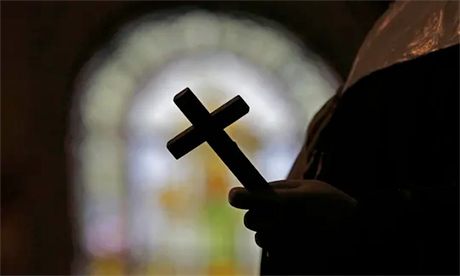As is already clear from the sudden rash of closings, cancellations and diagnoses of prominent people, the coronavirus outbreak is spreading rapidly.
In response, many bishops around the world have taken the difficult but prudent step of dispensing the faithful from their Sunday Mass obligation.
Those decisions are to be commended for the sake of public safety.
Other bishops, however, have gone further.
Some dioceses (including Seattle, Providence and all dioceses in Pennsylvania) have suspended the public celebration of Masses altogether.
If bishops wish to do their utmost to contain the spread of the outbreak, it is my sorrowful conclusion that they must all take this extraordinary step and suspend Masses throughout the United States until the outbreak has been stabilized.
If bishops wish to do their utmost to contain the spread of the outbreak, it is my sorrowful conclusion that they must all take this extraordinary step and suspend Masses.
Please let me be clear: I am not a theologian and do not pretend to possess the competence to make theological claims. I am only a computational biologist alarmed by the spread of the coronavirus.
One week ago I took a leave of absence from my work to volunteer with the New England Complex Systems Institute, which has rapidly assembled a global network of volunteers in science, technology and policy in order to help contain the outbreak.
I am also a catechumen.
But even as one only a few steps down the lifelong path of conversion, I am deeply concerned for the well-being of the Catholic faithful and am cognizant of the church’s great potential influence to combat the spread of the infection.
It is my lay understanding that the suspension of public Masses is a measure that bishops may take in the gravest of circumstances.
I simply wish to explain the gravity of the present situation from a scientific point of view and explain how the continued celebration of public Masses makes them even graver.
In recent days, people with ordinary levels of scientific literacy may have heard uncertain and conflicting reports about the scope and gravity of the outbreak.
As a scientist who has been involved in conversations among experts on this issue, I, therefore, wish to first summarize the best understanding of the epidemiological community.
What we know about the virus and outbreak
Covid-19 is the disease caused by SARS-nCoV-2, a novel coronavirus that emerged from Hubei, China, late last year and spread throughout the globe.
As of this writing, there have been over 135,000 confirmed cases worldwide and over 5,000 deaths.
In the United States, the numbers stand at almost 1,700 confirmed cases and at least 41 deaths.
The true number of Covid-19 infections is unknown, due to the difficulties and limited availability of clinical testing.
Several different estimates by different methods all suggest that the true caseload is underestimated by a factor of 10 or 100.
The true number of infections in the United States is therefore now between 17,000 and 170,000.
Covid-19 is not properly comparable to the flu, as is sometimes suggested.
Hospitalization is required in 10 to 20 percent of cases. According to my best estimate (based on current data, calculating deaths as a percentage of confirmed cases), the mortality rate is 3.7 percent (almost 40 times that of the flu), and may rise to as much as 10 percent if hospital treatment is unavailable.
Covid-19 is spreading rapidly in the United States, with the number of confirmed infections doubling approximately every three days.
At current rates, the US will reach hospital capacity in less than three weeks.
Due to the rapid doubling time, every day of inaction at this stage of the outbreak could increase the total toll of the outbreak by roughly 25 percent.
The Covid-19 outbreak can be slowed and stabilized, as China’s example shows.
But we must also enact immediate and stringent measures as China did.
Halting the outbreak in Wuhan required radical interventions: quarantining cities, disrupting daily life and restricting the movement of almost 800 million people.
These measures were indeed draconian.
However, because Covid-19 can only be combated by reducing opportunities for transmission, they were also necessary to avoid complete infection of the entire country.
How suspending public Masses can help contain the outbreak
Recently, the bishops of many U.S. dioceses have dispensed the obligation to assist at Mass.
This is an excellent first step and they are to be commended for recognizing the severity of the situation. Continue reading
Additional readingNews category: Analysis and Comment.




